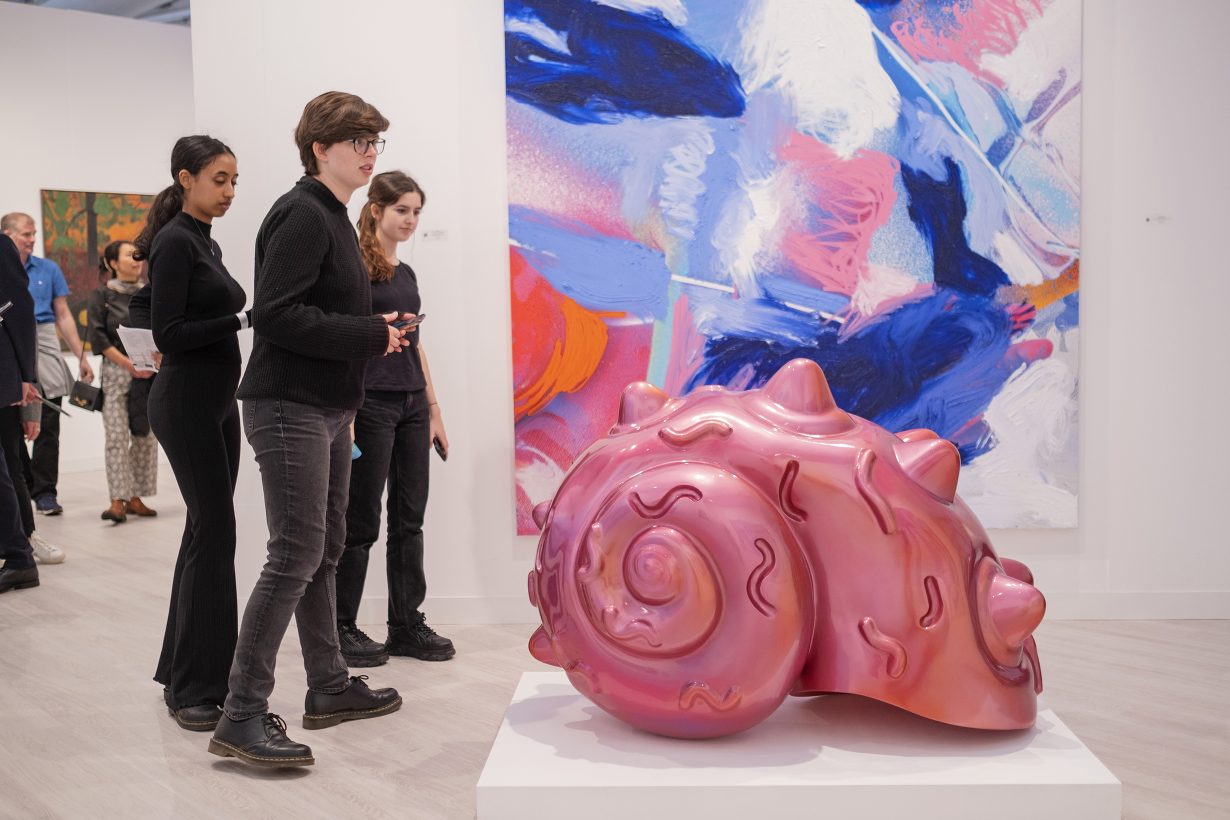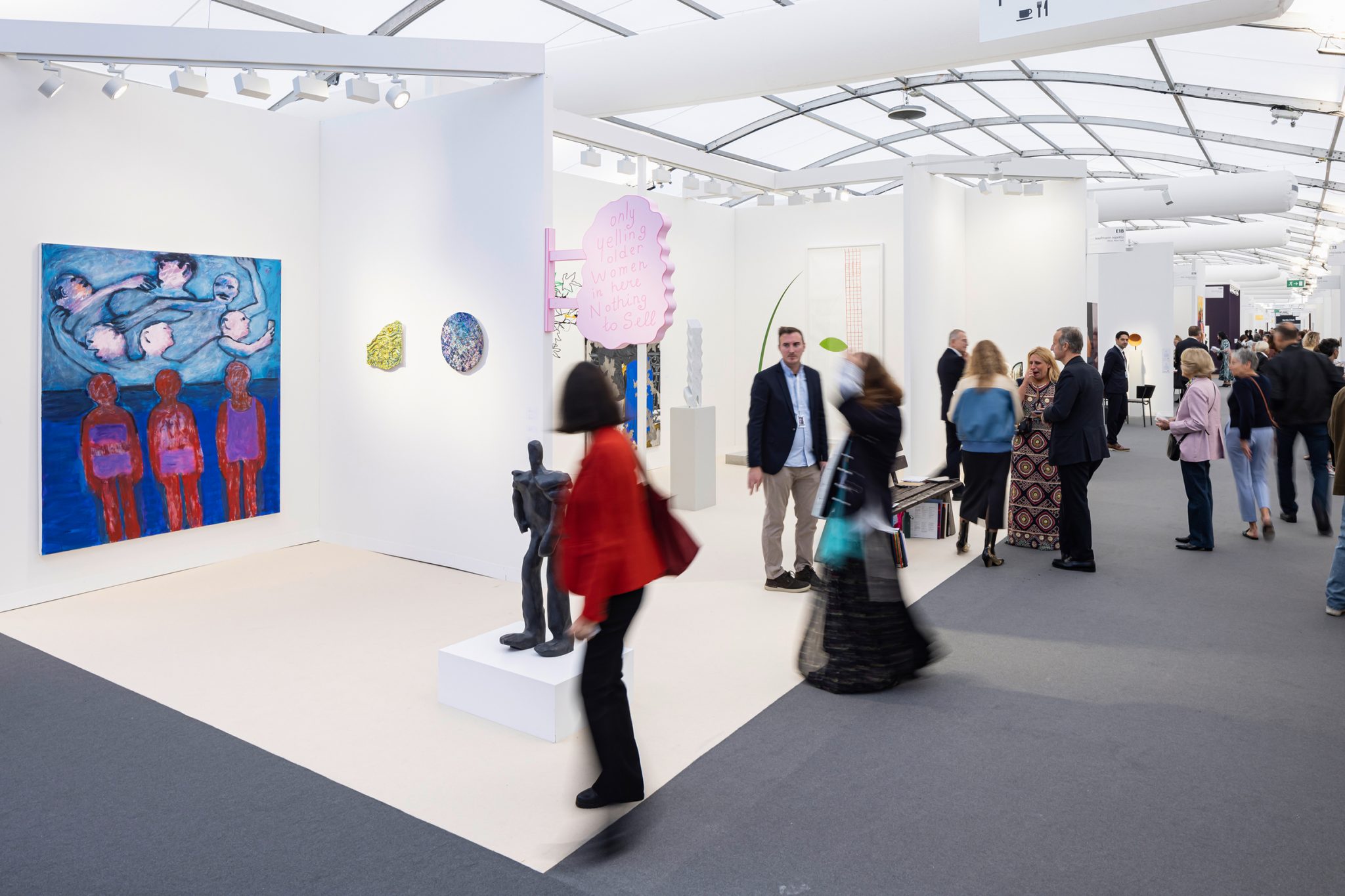Audiences that can’t tell good from bad, artists who can’t either, gallerists who can’t get off the hamster wheel, and a general sense of burnout is a recipe for ‘abundant feelgood staleness’
A latter-day trend in nonfiction publishing is that the author spends a year doing something unusual – not buying any commodities, ‘living like the Danish’ – and reports back. I’ve recently thought (albeit only briefly because I know I’d go insane) of spending a year at art fairs without going home. It looks eminently doable. At the time of writing, for instance, Frieze London has just finished and, a short private jet flight away in Paris, ‘Paris + par Art Basel’ is opening. Eleven days after that closes, on 3 November, Artissima opens in Turin, though as with all fairs there’ll be events for several days prior. With an eye on Art Cologne (whose official opening is ten days later, on 16 November), I’d loiter around Italy for a few days before jetting off to Germany. (I know trains exist, but still.) When the parties run out circa the 20th, I’d then scoot to Miami and wait for Art Basel (again) to open at the end of November. Of course, I’d only follow this itinerary if I were lazy. According to artfairmag.com, there were some 75 – 75! – art fairs set to open between mid-October and the end of 2022 alone, from Baltimore to Bogota, Luxembourg to Lagos. ‘Art-buying itinerary planner’ is no doubt some sub-art-advisor barnacle’s actual job.
One reason you’d feel discombobulated while living entirely from fair to fair – which I glimpsed even in my now-historical experience of going to several per year – is that, once inside, you’d probably feel like you never moved. Art fairs, even the non-franchised ones, mostly look exactly the same, by distraction-minimising design. Aside from sometimes being inside tents and sometimes not, their temporary architecture epitomises French anthropologist Marc Augé’s concept of ‘non-places’ – the transient, sterile, identikit spaces of supermodernity (from the fair’s booths to the Illy coffee stands) – and extends sameness to the attendees (celebs, tanned rich men in suits, rich women with performatively extreme, to put it generously, surgery) and, not infrequently, the art itself. If you go to the fairs mentioned above these days, for example – and here’d be another reason for losing your mind at speed – you’re pretty much guaranteed to see a lot of colourful, superficial, often plain bad painting. If art fairs per se make you feel like space has stopped – which country are we in, again? – the current overwhelming primacy of painting does the same to temporality vis-à-vis art history and notions of artistic progress and development. It’s non-time art.

A lot of these canvases, almost eerily, just are. Yes, some of the work is identitarian, but much of it seems predicated on some collective if unspoken agreement that, what the hell, it’s the end, let’s just have colour and superficially pleasing composition again, and things that remind us, rosily and blurrily, of other things from other times. This, naturally, makes it an easy sell to someone with more money than sensibility, and less interest in long-term investment than in flaunting their so-called ‘positional goods’ now; but one might also try and dissect it as a cultural moment. The period of avant-garde challengingness in art hasn’t been that long – a century and a half, tops – and retrograde painting everywhere 24/7 is maybe just the strongest signal that there’s no longer much appetite for difficulty or even unfamiliarity. Meanwhile, the financialised art system just wants to suck out the last of the marrow. Fold together audiences that can’t tell good from bad, artists who can’t either, gallerists who can’t get off the hamster wheel, and a general sense of burnout on the part of both cultural producers and the public, and an art fair perhaps has begun to become somewhere you go to escape the unpleasant present, a placeless, timeless bubble. (Cue theme song from Cheers.)
There’s a circular logic to all of this. Obviously you don’t want to think about the burning world when you just contributed – by travelling to this fair and then going on to the next one, by endorsing high-carbon-footprint events – to fanning the flames. And when you get inside, sealed off from reality, you increasingly don’t want to be hectored, frightened, guilt-tripped. You want that comfortable armchair, thanks, not reminders of your increasingly soaked deckchair. The upsides of this abundant feelgood staleness for the rest of us might be that, first, it’s morbidly interesting to observe in sociocultural terms. Secondly, it’s the kind of ostentatious cultural impasse that, just maybe, goads a subsequent generation of creators to react against it, quite possibly with no regard whatsoever for ‘the market’. And if, as a viewer, you’ve always liked the idea of contemporary art but felt it was a little too edgy, too much work, then rejoice – it’s your moment, finally.
